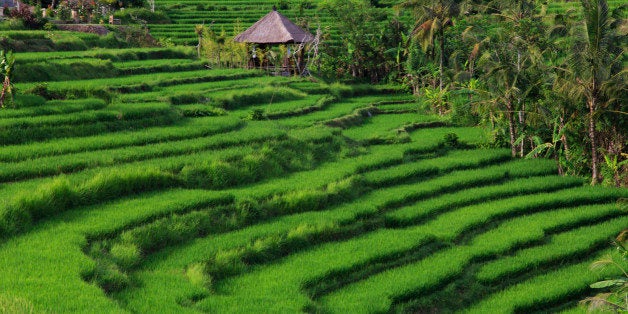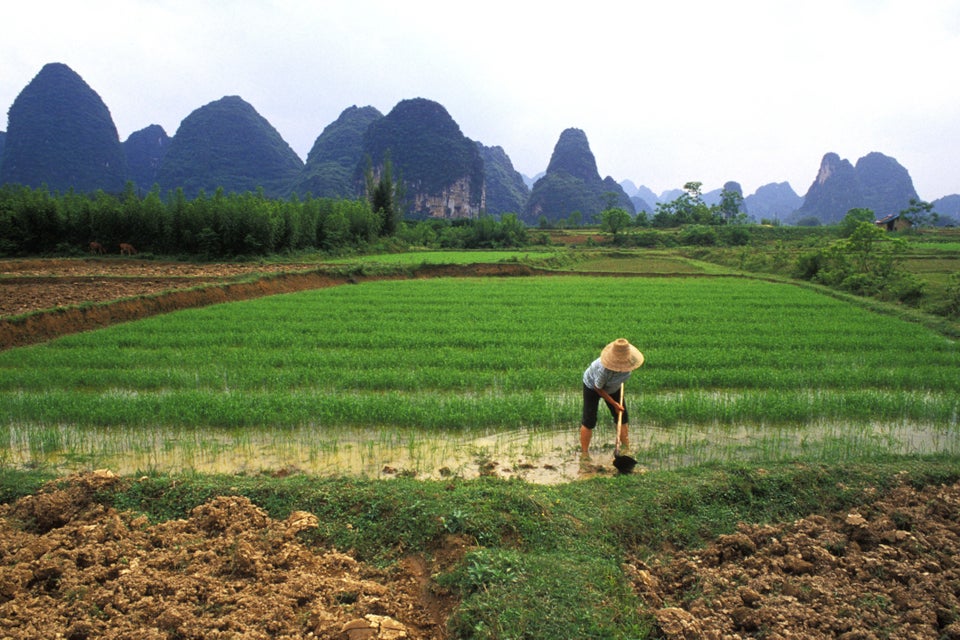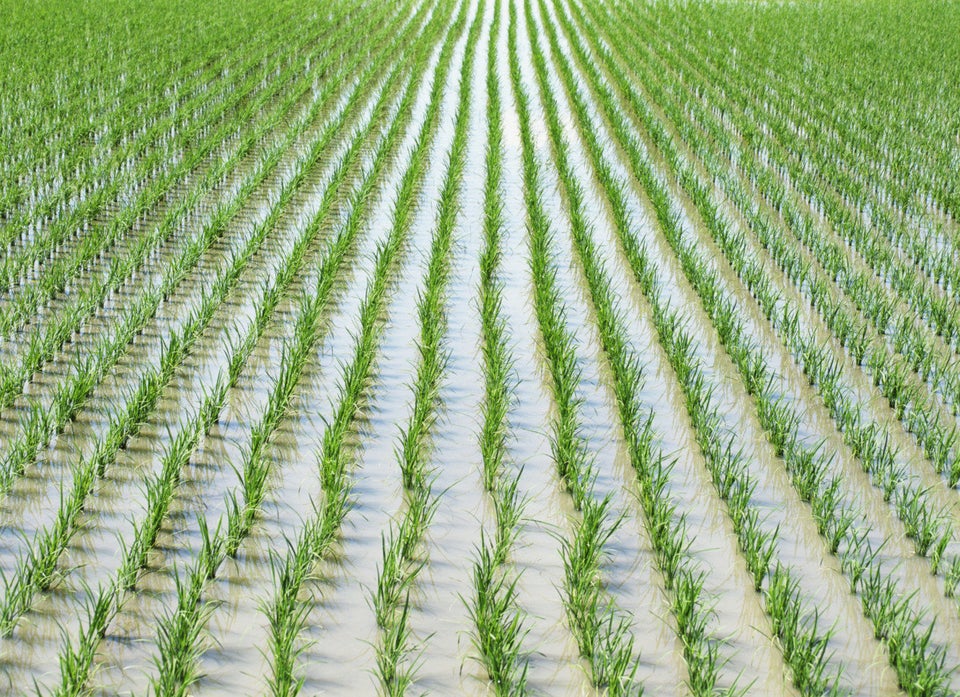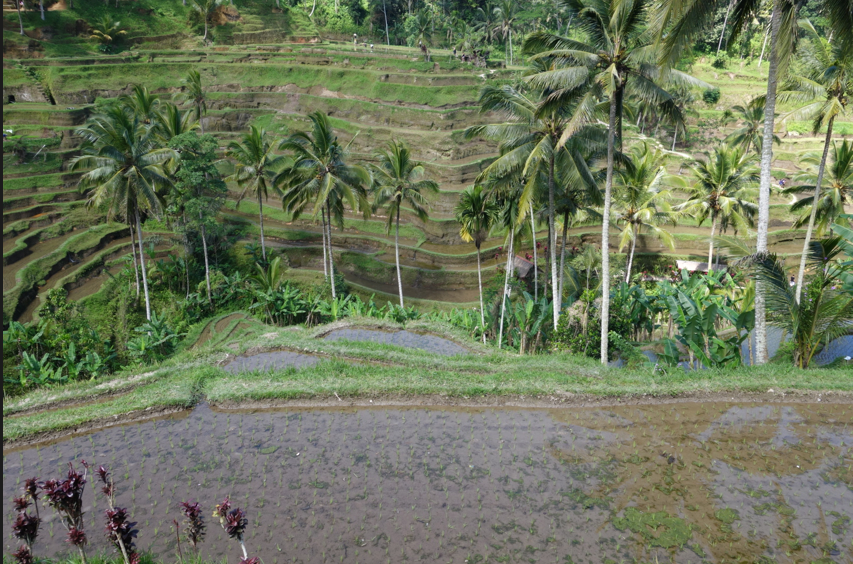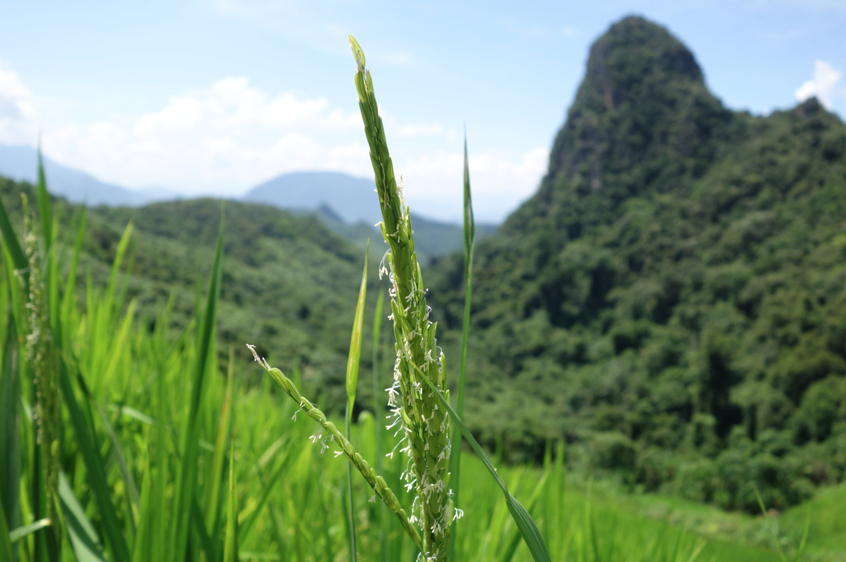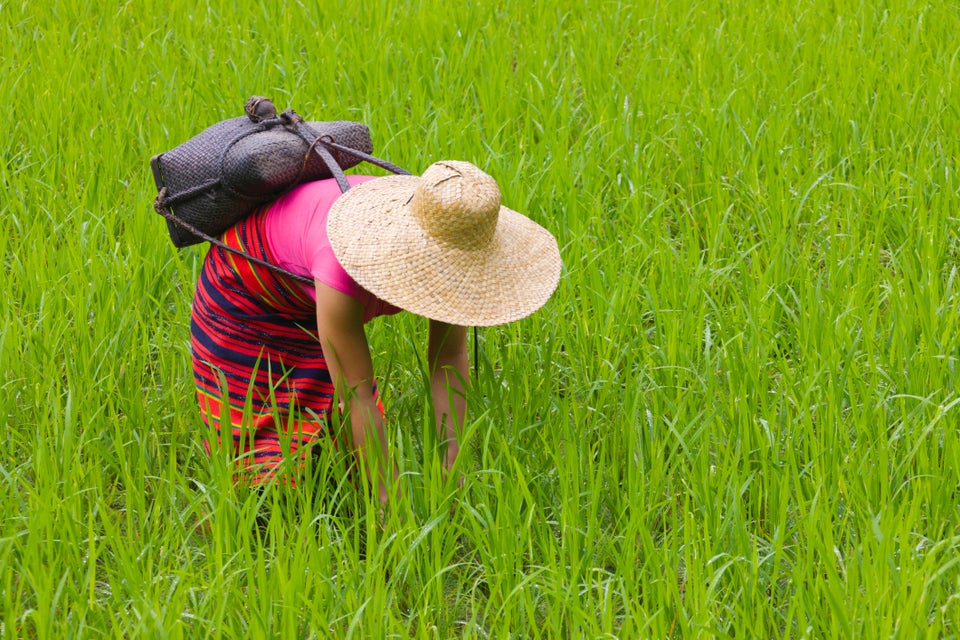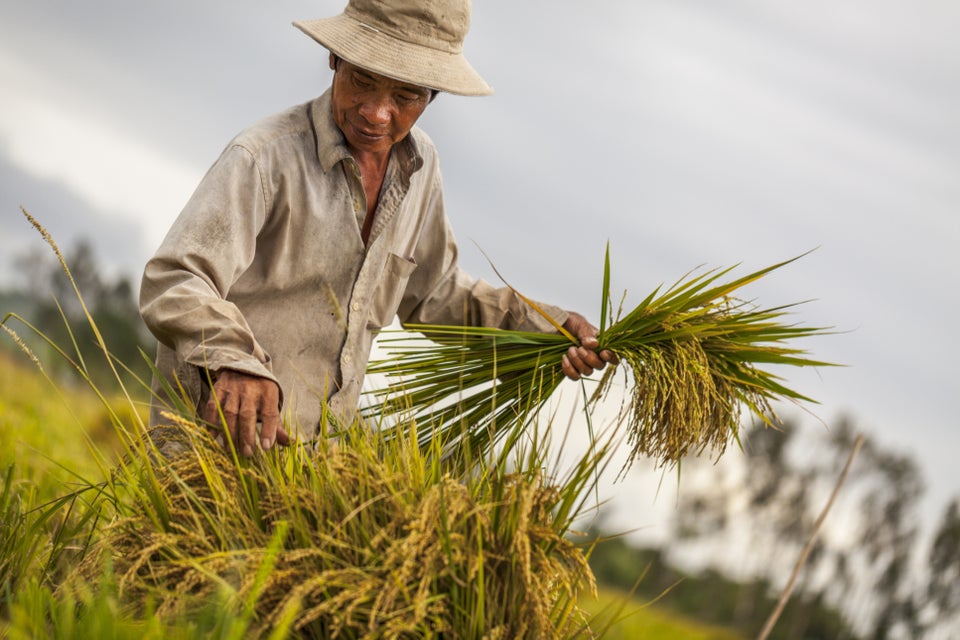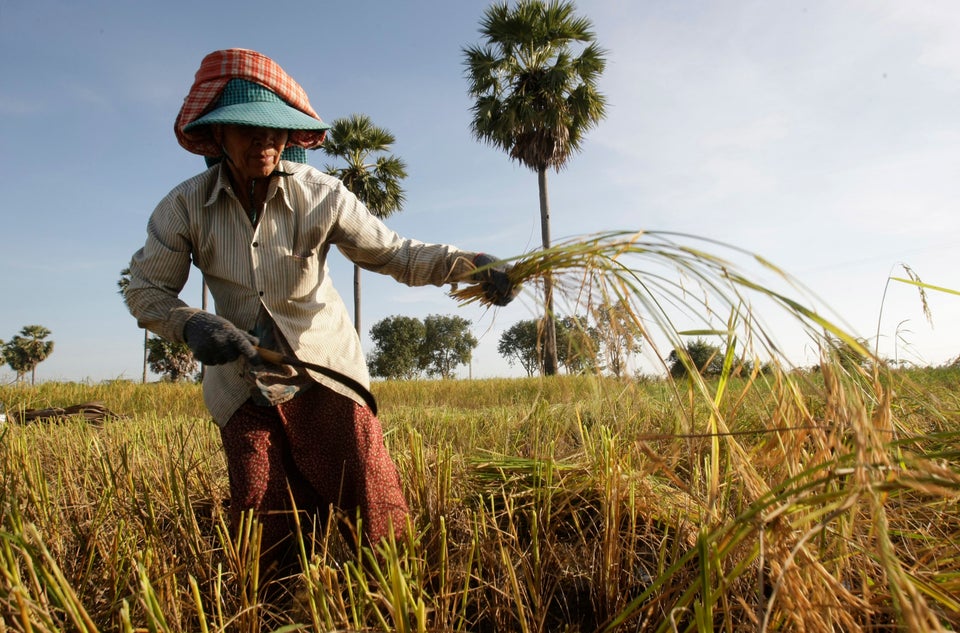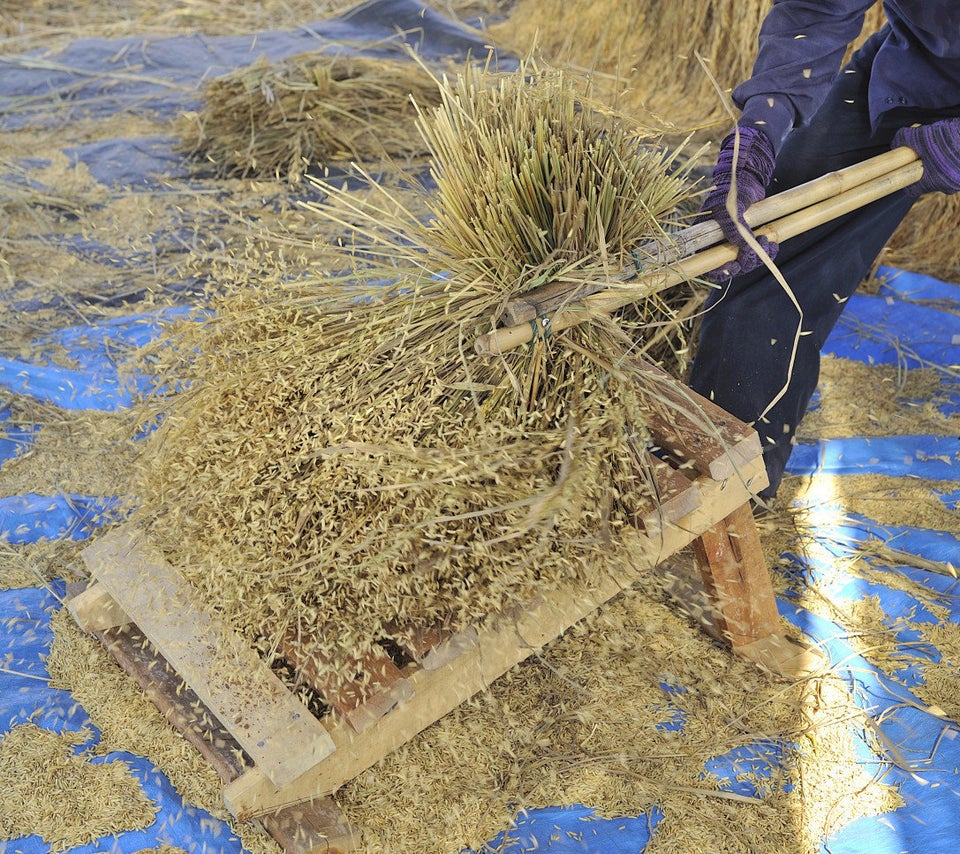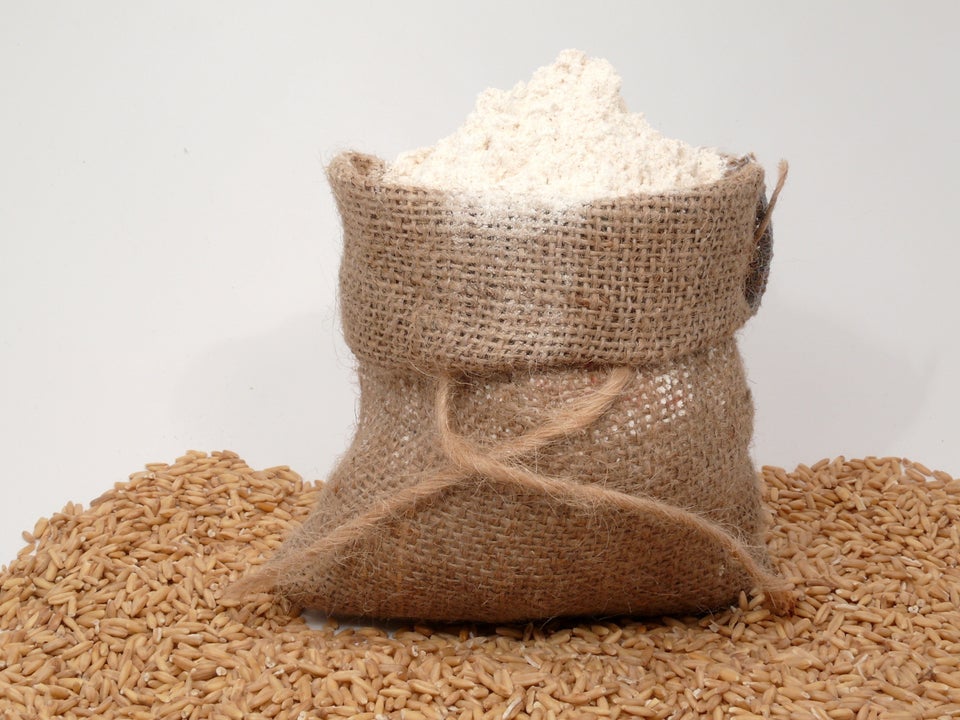You may be familiar with the picturesque image of rice paddies -- lush, green fields, perhaps stacked in terraces -- but do you know how rice gets from the paddy to your plate? The process is seriously labor intensive, requiring more steps than you might think would be necessary for such tiny, little grains.
A staple found all over the world, rice is grown everywhere from Minnesota to Myanmar. According to the Food and Agriculture Organization of the United Nations (FAO), however, an incredible 90 percent of it is grown and consumed in Asia. Making up anywhere from 50 to 80 percent of calories in a person's diet in Asia, rice is the backbone of millions of people's lives. What's more, demand is skyrocketing due to population growth. The FAO estimates that rice consumption in Asia will increase 51 percent between 1995 and 2025.
It's time we all understood how this critically important crop grows and how it's harvested. Here are the basics you need to know:
China produces and consumes the most rice out of any country in the world.
Researchers via Getty Images
Wet rice is grown in rice paddies.
Akira Kaede via Getty Images
Rice paddies are fields of rice seed that hold a certain level of water -- usually about six inches to start.
Paddies may be built into terraces to facilitate flooding.
Alison Spiegel
One terrace will be flooded to initiate the rice growing process, and over time as the rice matures, farmers will lower the level of water by releasing it to terraces below. When the rice is ready to be harvested, farmers will drain a terrace completely by removing barriers between terraces, letting water flood from the higher terrace to a lower one.
Glutenous rice, also known as sticky rice, is grown both in lowland paddies as well as in fields at high elevation.
Alison Spiegel
Sticky rice requires less water than regular rice, and can thus be
grown on hillsides where the crop may get enough water from natural rainfall, in addition to lowland paddies that are manually irrigated.
Rice is harvested when the grains' moisture content is around 25 percent.
Danita Delimont via Getty Images
According to the FAO, the grains should be full but not cracking, with yellow hulls, and the stalks of the plant should be slightly bent. It could take anywhere from
three to six months for rice to reach this stage.
To harvest rice, farmers drain, cut and dry.
Peter Stuckings via Getty Images
The first step of harvesting is draining the paddy. Next, farmers cut the plants -- with a scythe or sickle if by hand -- and transport them elsewhere to be laid out and dried for two or three days.
Rice can be cut by hand or machine. In the developed world, harvesting by hand is still very common.
ASSOCIATED PRESS
It takes a lot of time to harvest rice by hand: 80 to 160 hours per hectare, or 198 to 395 hours per acre,
according to the FAO. By machine, rice might take around 2.7 to 4.5 hours per hectare, or 6.7 to 11 hours per acre, to harvest. Depending on the region, and the access to machinery, mechanized cutting is becoming increasingly popular.
After the rice has been cut and laid out to dry, it must be threshed.
sommail via Getty Images
Threshing, which separates the grain from the stalk, can also be done by hand or machine. One common method of threshing is slamming sheaves of against a table with slots in it. The banging dislodges the grains, which fall through the cracks in the table to a collection area below.
Finally, rice grains are dried again, and maybe milled.
Joerg Mikus via Getty Images
When harvested, rice has around 25 percent moisture content, but after it is threshed, it needs to dry to
about 14 percent water content in order to be safe for storing and milling. The process of milling removes the husk, bran layer and germ, and results in what we know as white rice. Brown rice is not milled, which explains its relative heartiness compared to white rice.
Now that you know how rice is harvested, go and enjoy one of these ridiculously awesome and easy rice bowls. We think you've earned it.
Want to read more from HuffPost Taste? Follow us on Twitter, Facebook, Pinterest and Tumblr.
